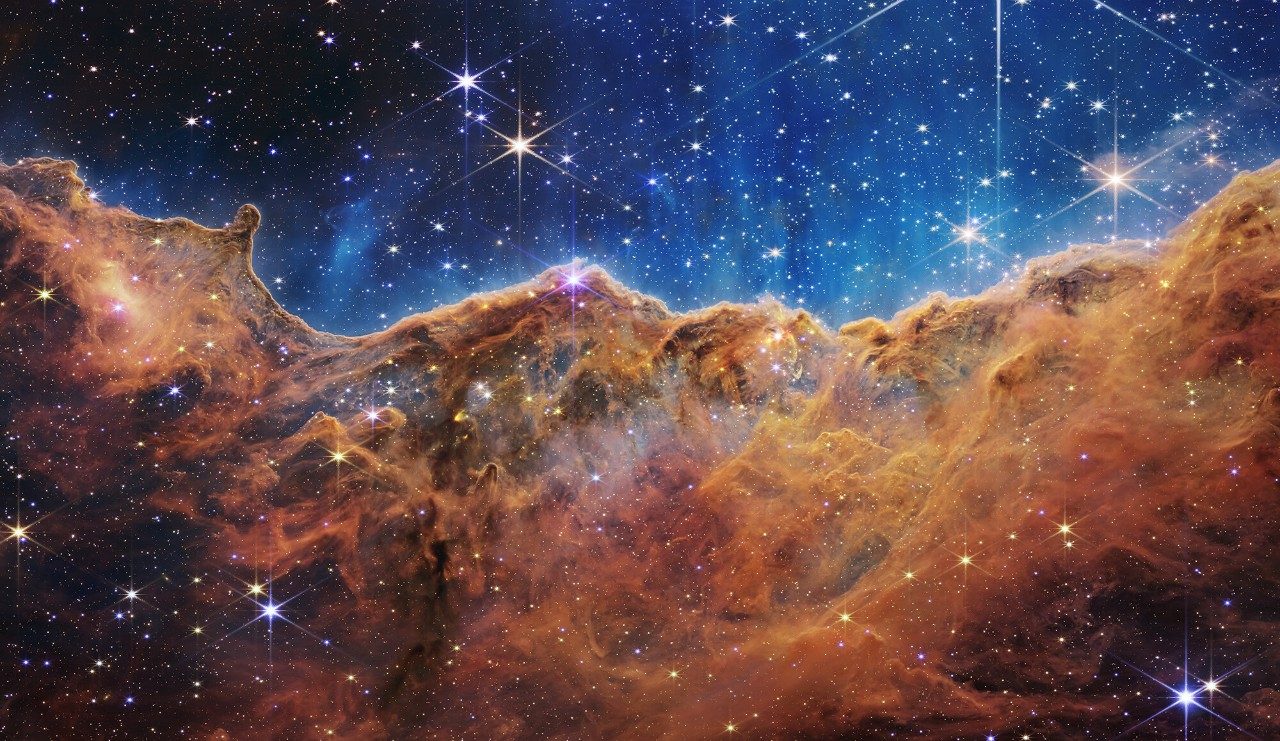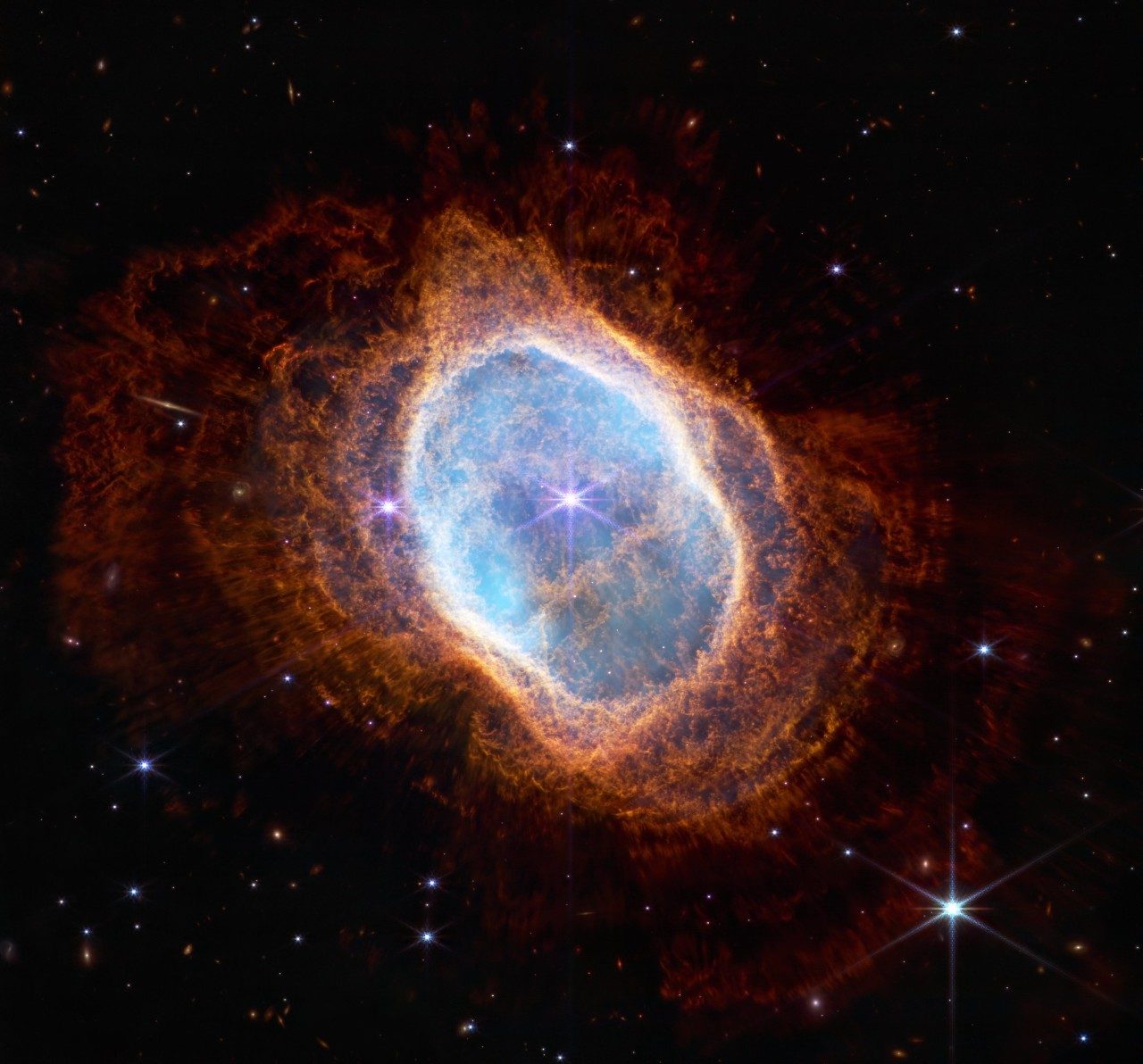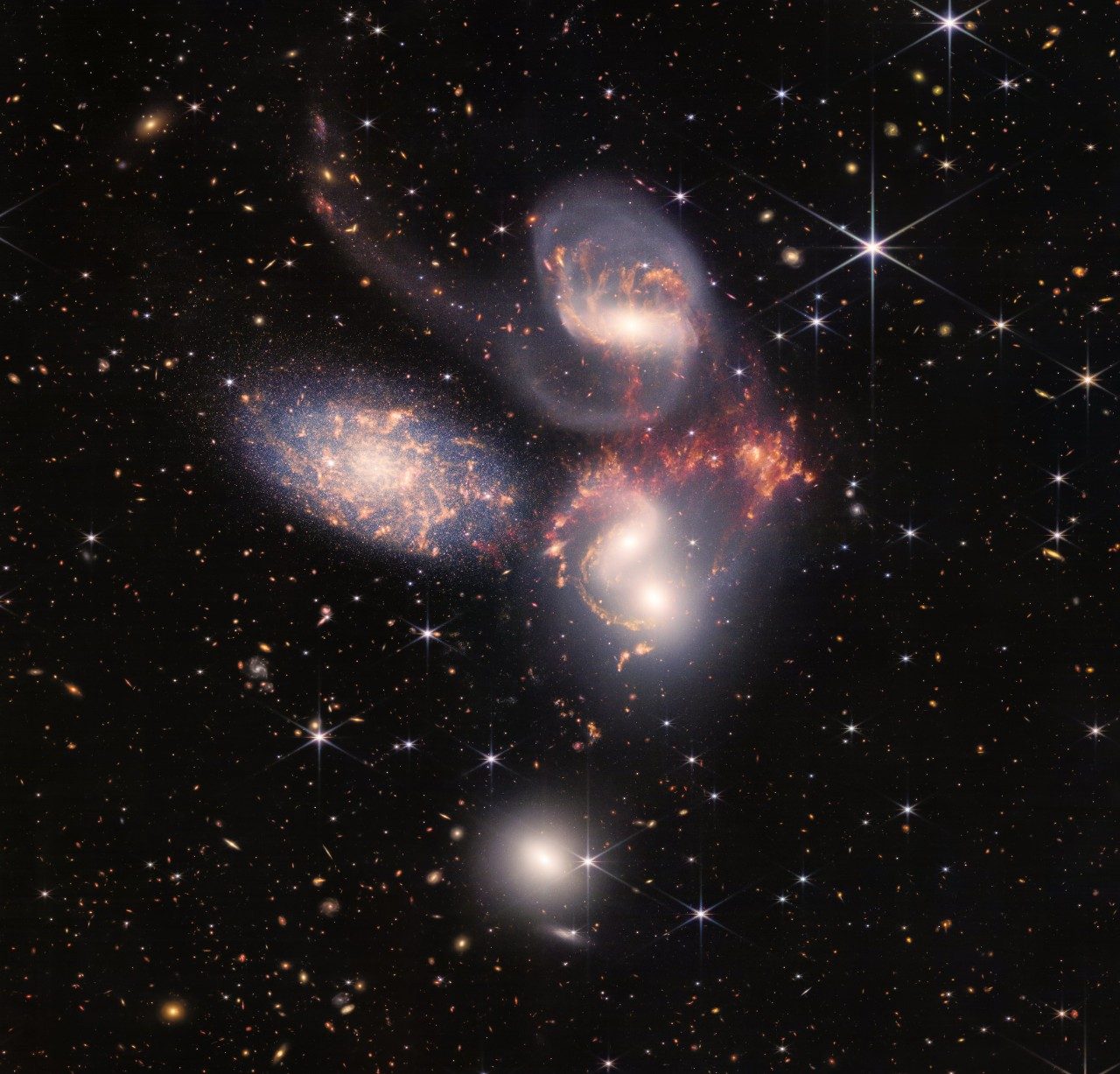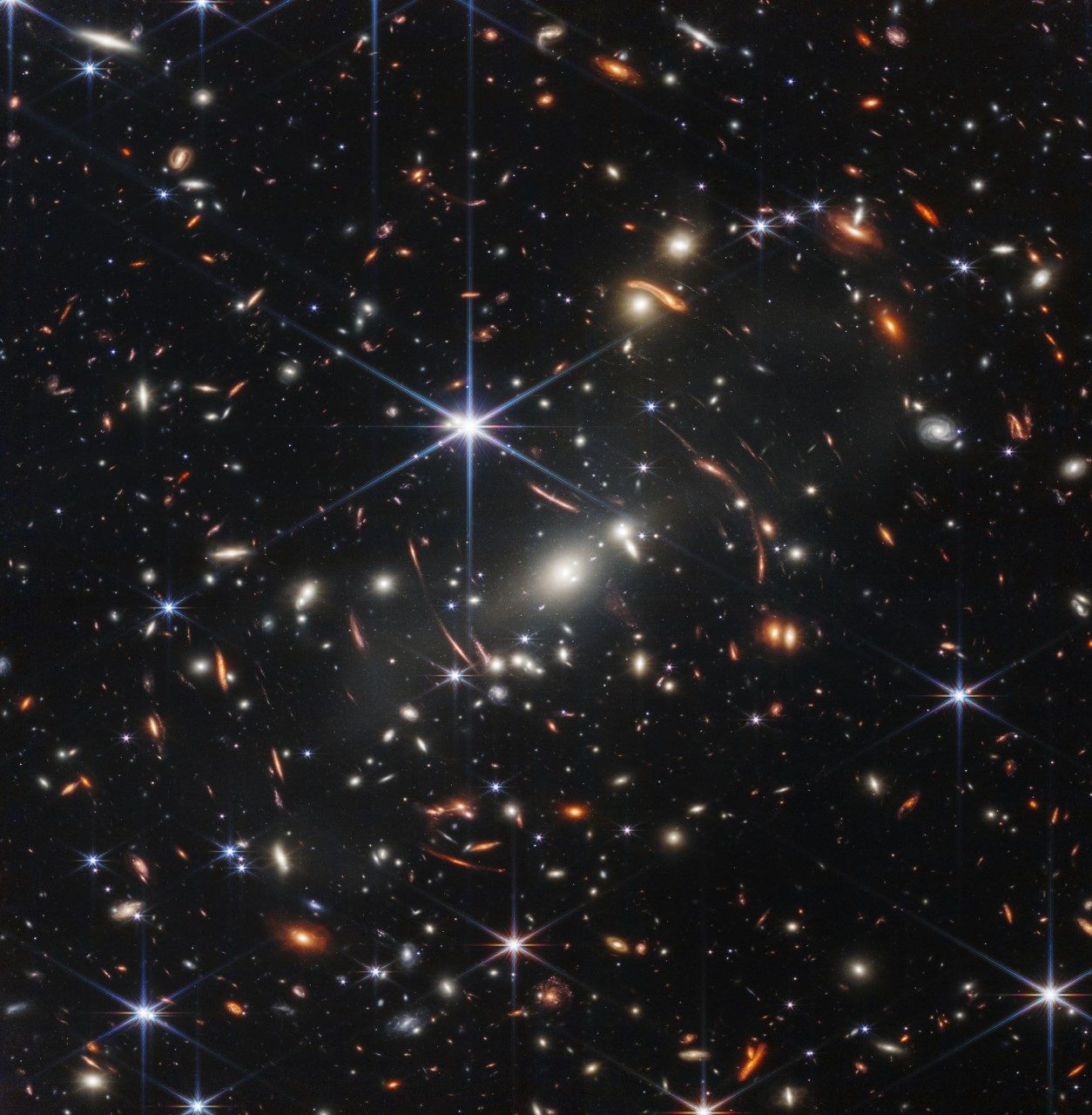Click an image to enlarge.
Credits: NASA, ESA, CSA, and STScI
The largest, most powerful space telescope ever built – NASA’s Webb Space Telescope – has revealed what our universe looked like 13.5 billion years ago, when the first stars and galaxies took shape after the Big Bang.
Capturing those “first light” images will be the exquisitely precise Near Infrared Camera (NIRCam), one of the most sensitive infrared cameras ever built.
Engineers at Lockheed Martin’s Advanced Technology Center (ATC) in Palo Alto, California, designed, assembled and tested NIRCam, which will serve as the primary imager aboard the Webb as it travels 1 million miles into space. NIRCam is an infrared imager measuring wavelengths of light from 0.6 to 5 microns. It was created to detect the earliest star clusters and galaxies, as well as stars in nearby galaxies and young stars in the Milky Way and objects in the Kuiper Belt.
NIRCam’s Journey
The launch of Webb on Dec. 25, 2021 represents a project nearly two decades in the making. NIRCam started out in 2002, when the ATC won the contract to create the imager for principal investigator Marcia Rieke of the University of Arizona.
Lockheed Martin’s Alison Nordt was there from the beginning, starting with structural analysis for NIRCam, through duties as program manager, and now as principal engineer. “When I first came to the NIRCam program, I was just a couple years out of graduate school, a newly minted Ph.D. (in aeronautics and astronautics) eager to work on this giant space telescope,” she recalls. “I've grown up on NIRCam.”
The journey wasn’t easy at times. “I’ve been through all the bumps, challenges and triumphs along the way,” Alison says. Now, she and current Program Manager Malcolm Ferry are anxious to see NIRCam open its eyes on the universe in the months following the launch.
“We’re looking forward to all the glorious science it will create,” Malcolm says.

Crafting Revolutionary Designs
“NIRCam is pushing the envelope of optical performance” Malcolm says. The ATC, though, has been creating revolutionary optical designs for 60 years. The center has designed, built and tested optical payloads for all types of missions, scientific, commercial and military, more than 118 optical instrument and payloads.
“You can go back to the 1960s, you know, before I was born, and we were building science instruments that went on Gemini,” Alison says. “We built instruments for the Space Shuttle. We've done a lot of solar physics instruments.”
In addition to NIRCam, the ATC teams created the Solar Ultra-Violet Imager and the Geostationary Lightning Mapper (GLM) for the Geostationary Operational Environmental Satellite (GOES-R), to name a few.
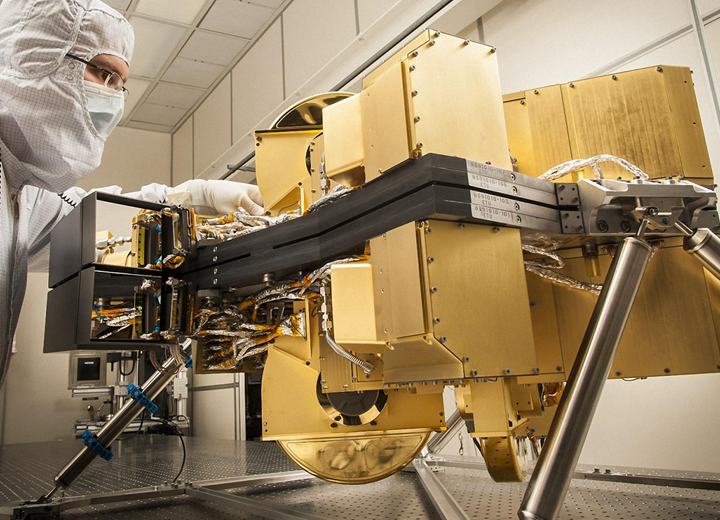
Super-Cool Tech and More
NIRCam technology has been applied to other missions. For example, the team developed methods to bond cryogenic optics that allow NIRCam to remain stable while functioning in ultracold temperatures: around 40 Kelvin, or about 150°F colder than the lowest temperature ever recorded in Antarctica.
“When we first came up with this idea, there were a lot of doubters that said, ‘you don't want to bond optics, and you really don't want to do that on a cryogenic mission,’” Alison recalls. “But we developed that technology to get extreme stability for NIRCam.”
The same mount design has flown successfully on other missions, including NASA’s Interface Region Imaging Spectrograph (IRIS), an instrument studying how energy and plasma move near the sun’s surface. “It’s an example of how we develop a technology with internal research and development that is applied to an initial program and then becomes a standard product of ours.”
More projects are underway on different scales of missions and science, from programs that look at the evolution of massive stars to monitoring the Earth’s carbon cycle. Others would revolutionize vibration isolation and precision pointing for future missions, and more projects would focus on technologies designed to build smaller, lighter-weight space telescopes.
The SPIDER (Segmented Planar Imaging Detector for Electro-optical Reconnaissance) prototype is one example. It uses a thin array of tiny lenses in place of bulky mirrors or larger lenses, potentially cutting size, weight and power needs 10 to 100 times.
Double Duty
Following launch, Webb will undergo six months of commissioning. During that period, the telescope’s 18 gold-plated hexagonal mirrors – together totaling more than 21 feet in diameter – will unfold origami-style and its tennis-court-sized sunshield will unfurl. Then, the telescope and its elements will be cooled, aligned and calibrated.
NIRCam has an important task during that commissioning period, taking initial images that will inform how to position and align the mirror’s hexagonal segments. Those first pictures won’t be Instagram-worthy, but they will be critical to making sure the mirror works once the telescope enters science mode.
With 18 segments, each with the ability to move in various directions or even change curvature, “there are a lot of ways you can tune the mirror,” Alison says. Light enters NIRCam, which uses wavefront sensing and control tools to align the mirror. “It puts a lot of responsibility on NIRCam to ensure no errors are imprinted on the primary mirror. That’s why we put so many stability and predictability requirements on NIRCam and did so much testing to ensure we understood any errors.”
Commissioning the telescope in space will take six months – what NASA calls “an exciting but harrowing time.” The ATC can help with software issues but fixing any major problems with the telescope with help from astronauts – as was the case with Hubble and a special Space Shuttle mission fix – won’t be possible. “It will be a million miles away, so we’re not going to be sending a crew up there to fix something if it doesn’t work,” Malcolm notes.
In the future as Webb completes its five- to 10-year mission, Alison, Malcolm and the ATC team will be looking out for the eye-popping science images NIRCam will produce. And while they are intrigued by the prospect of scientific discoveries, they are even more excited by the promise of mysteries and new questions the telescope and NIRCam will reveal.
Says Malcolm, “What I find most exciting is finding the things you didn’t expect to see – that’s where you learn something new. So, I’m looking forward to those surprises.”
Resources:
The Webb Space Telescope is an international collaboration between NASA, the European Space Agency and the Canadian Space Agency, as well as six NASA centers and six industry partners, including Lockheed Martin. Read more here.
For more technical information about NIRCam’s capabilities, check out these University of Arizona and NASA links.
Get the latest news from NASA on Webb Space Telescope mission progress here.





